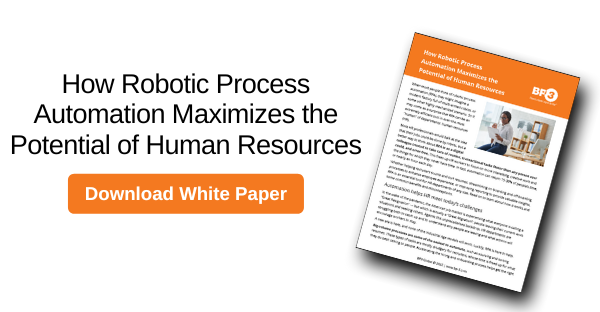What People Get Wrong About Automation
Here are four common misconceptions surrounding how RPA works in an HR context:
1. Humans Do Not Remain in the Process
The idea that automation is replacing HR workers is just false; in fact, RPA is like having an extra person in the department, freeing up everyone else to do more engaging and interesting work. People work together with bots to become more efficient, with the goal of automating only the tasks that humans don’t need to do.
2. Training is Not Required
RPA is a digital colleague, and like any colleague, it needs to be trained. It might not get procedures right the first time. The humans teach by defining the rules for the bot. As the underlying systems change, the bots need to evolve and be corrected. This iterative process is what results in added value.
3. Imperfect Processes Cannot be Automated
There can be a pretty big psychological impediment to adopting a new enterprise solution. What if all the processes aren’t perfect yet? Many companies put off implementing automation solutions for this very reason. Fortunately, there’s no need to worry, as RPA does not require flawlessness to work well. A human task can be automated as-is to realize the immediate benefits of automation. This automated process can be further refined to achieve higher efficiencies.
4. Automation Does Not Work Across Multiple Systems
Companies are often already working with various systems that have their own built-in automation features. So why do they need RPA? It is never a case when a company would have only a single HR system or a human would interact with a single HR system to complete his/her work. Each of these systems is a walled-in garden and makes it highly difficult to automate anything beyond its walls. But an RPA bot can work across multiple systems and can cross boundaries, making it a lot easier to simulate just how a human works.
RPA is not one-size-fits-all; it’s more like a protocol for speeding up human-systems integration. It can and will look different for every business and every HR department, depending on their needs, and many on-ramps exist. The best place to start is to figure out what is most annoying to people, or keeping them up at night, and find a way to automate that process.
Get things right the first time! Contact us today to see how you can benefit from RPA in HR.
